Does anyone drink cow’s milk anymore? Judging by the refrigerated section of the grocery store, the answer is obviously “yes.. but not as often.” If you allow your eyes to scan elsewhere you’ll see that a whole bunch of plant-based milk brands is beginning to take up shelf space as more and more people ditch cow’s milk due to allergic reactions, lactose intolerance, environmental concerns, a healthy hate for the dairy industry, or from simply being weirded out by the idea of drinking the milk of some other animal.
It makes sense, milk is kind of weird, but we drink it for a reason. It’s packed with essential nutrients, more so than all of the milk alternatives out there, which are typically fortified with vitamins and minerals just to get them in the same nutritional ballpark as cow’s milk. The nutrients in cow’s milk are also more bio-available (absorbable by the body). According to Healthline, those nutrients include protein, iron, niacin, vitamins B, E, K, thiamin, and selenium, as well as calcium that’ll keep your bones and teeth healthy. Also, milk has given us the best butter and cheese, and for that alone, we’ll always have a special place in our hearts for the OG.
Still… sometimes you just don’t want to mess with milk and we’re living in an age where you don’t have to. There are all sorts of different plant-based milk alternatives readily available at every grocery store. Unfortunately, a lot of them are also garbage. So we’ve taken a deep dive into every popular plant-based milk alternative currently on grocery store shelves in an effort to give you a full run-down of all the good and bad of each. Whether you’re looking for milk for your cereal, soup, or latte, or you’re baking a cake or making a smoothie, we’ve got you covered.
Wait… How Do You Milk Any Of This Stuff?
It’s something that you might not think about because in a lot of cases plant-based milk looks like milk, but you can’t exactly milk an oat. Or an almond. Or any of this stuff. So then what the hell is plant-based milk? In most cases, it’s a bunch of ground-up beans, grains, plants, or nuts that are mixed with water, vitamins and minerals, sometimes sugar or vanilla flavoring, emulsifiers, thickeners, and gums, and perhaps the most shocking of all, oils. That’s all blended together to make, well, “milk.” But what do you want people to call this stuff? Somewhat interestingly, in most cultures outside of the Anglosphere, they call them “drinks” — oat drink, soy drink, almond drink, etc. But we digress.
Like plant-based meat, plant-based milk requires a whole lot of processing. So in order to get that consistency milk is so famous for, a lot of plant-based milk options need some kind of fat mixed in. That means a lot of brands opt for oil since it’s dairy-free and contains healthy fats (assuming it’s good oil, though in most cases, it won’t be). Once you know plant-based milk has oil in it, you won’t be able to not taste it. We sincerely apologize for letting you know.
What To Look For:
When it comes to plant-based milk, the fewer ingredients the better. It’s normal to see emulsifiers like sunflower lecithin and dipotassium phosphate, or vitamin and mineral blends, and salt. You’re going to want to stay away from things like added sugar, sweeteners, the phrase “natural flavors,” long lists of ingredients you have a hard time pronouncing, and something called carrageenan. Carrageenan is an emulsifying agent derived from seaweed that, according to MedicineNet, scientists believe can induce inflammation and lead to chronic illnesses and digestive disorders.
We should also note that certain low-quality oils may also lead to inflammation, but that’s a whole other guide we’d have to dive into so we can’t really cover that here. You may also want to spend the extra dollars for products that are organic, considering a lot of pesticides go into the growing of things like almonds, peas, and oats. In short — look for unsweetened “milk” with a shortlist of ingredients that contain good levels of protein, calcium, and vitamins, and stay away from carrageenan.
The Milks:
Almond Milk
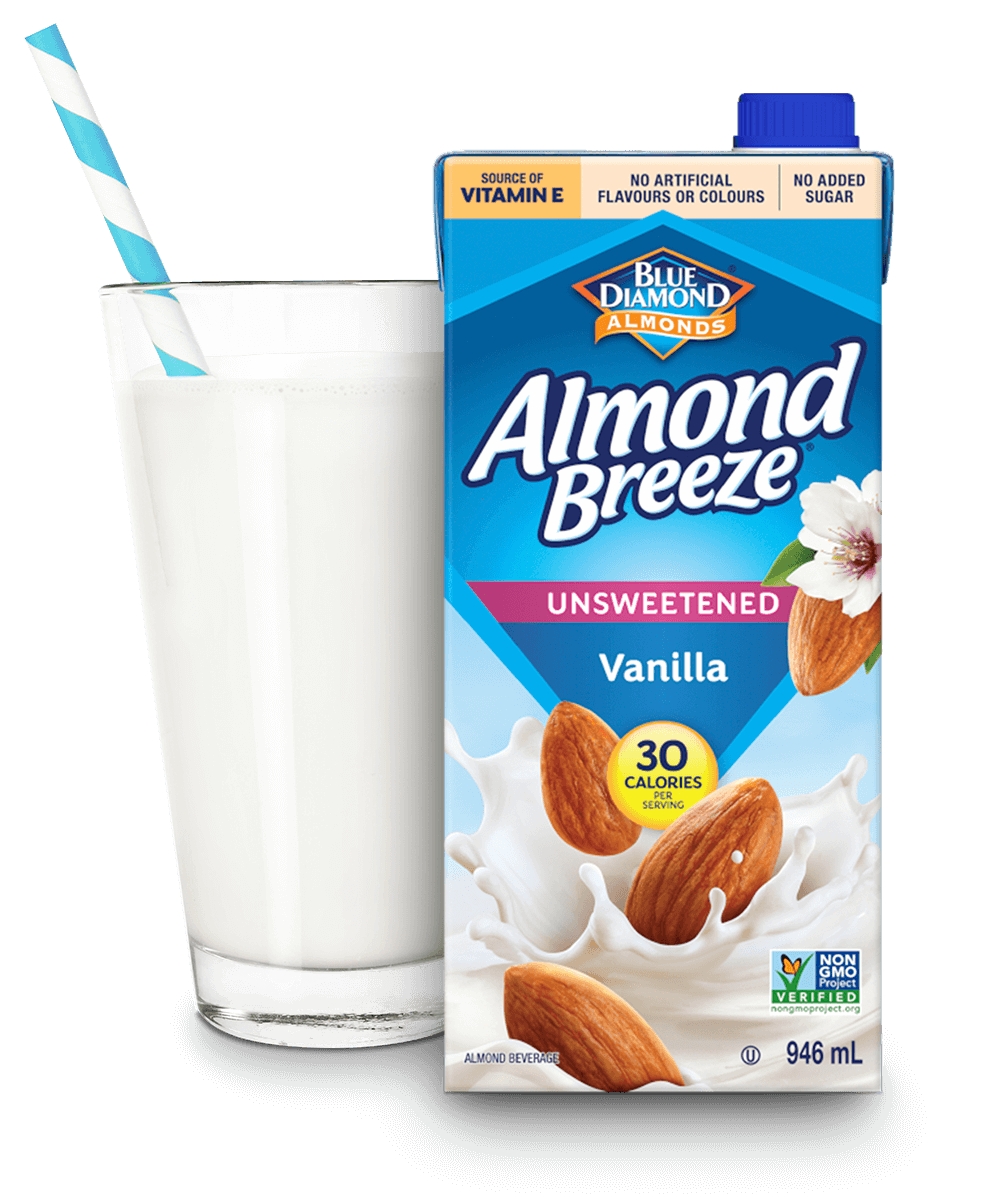
The Milk:
Almond milk is hands-down the most popular plant-based milk currently on the market. Tasting it, it’s easy to see why. It has a soft and creamy texture with a delicately nutty flavor and is, according to Medical News Today, naturally high in fat, vitamin E, calcium, and potassium while being low in calories and, unfortunately, protein. Generally, most almond milk brands further fortify it with calcium, more protein, and vitamins A and D, giving it a nutritional profile that isn’t that far off from cow’s milk. Though it is less bioavailable, which means you don’t absorb it quite as well.
Unfortunately, almond farming is very damaging to the environment considering almonds require a lot of water to grow and most almonds in the world come from California, a state that is always in the news for being in a drought. Maybe stop growing almonds, California! No seriously, I say this as a Californian, stop growing almonds here, please!
Where it sucks:
Baking. Don’t substitute cow’s milk for almond milk in a baking recipe. Well, let us walk that back a bit, you can substitute 1:1 but you shouldn’t. Almond milk has the high-fat content to act as a good substitute in most recipes, but the flavor leaves a lot to be desired. Milk is sweet, almond milk — especially the unsweetened stuff — is not, which will result in your recipes always tasting inferior when compared to using real dairy. The texture will also be less fluffy.
Where it thrives:
In almost every other use for milk that you can think of. Need something for your cereal? Almond milk. Need some cream for your at-home coffee? Bam, use almond milk. Making a vegan cheese? Almond milk is the stuff!
Where you wouldn’t expect it:
Smoothies and milkshakes. As I mentioned before, almond milk has a pretty high-fat content, which is why it works in baking (even though, again, we don’t suggest it). So when it comes to smoothies and milkshakes, it’s one of the best choices you can use next to cow’s milk. It nails that creamy consistency.
Banana Milk

The Milk:
Banana milk is made with blended banana and water, so it is essentially banana juice. If that sounds delicious to you, we’re happy to report that it is. Banana milk is one of the best-tasting milk alternatives out there thanks to its natural sweetness. Some banana milk on the shelves is blended with other plant-based milk, so keep that in mind when looking at ingredients lists.
This option shines for being low in carbs, calories, and added sugars, as well as being allergen-free so long as it isn’t mixed with nut-based milk (or you’re not allergic to bananas). Unfortunately, it’s also low in protein and other important nutrients. So if you’re looking for a milk alternative for flavor, this is that milk. If you want milk for nutritional reasons, this one is one of the weaker options.
Where it sucks:
Savory options. Don’t make a bechamel sauce or any other cream sauce with banana milk unless you want it to taste… banana-y.
Where it thrives:
Smoothies, obviously. Banana milk is a great way to double down on banana flavor when you’re mixing up a smoothie.
Where you wouldn’t expect it:
As a great baking option. Sometimes. Yes, banana milk tastes a lot like a banana. So if you don’t want the taste of banana in your cake, don’t use it. But if you do, it really adds that magical touch of something extra. Don’t use it to make banana nut muffins… banana-ier, instead add a subtle touch of banana to things like a devil’s food cake, or even pumpkin spice cupcakes.
Cashew Milk
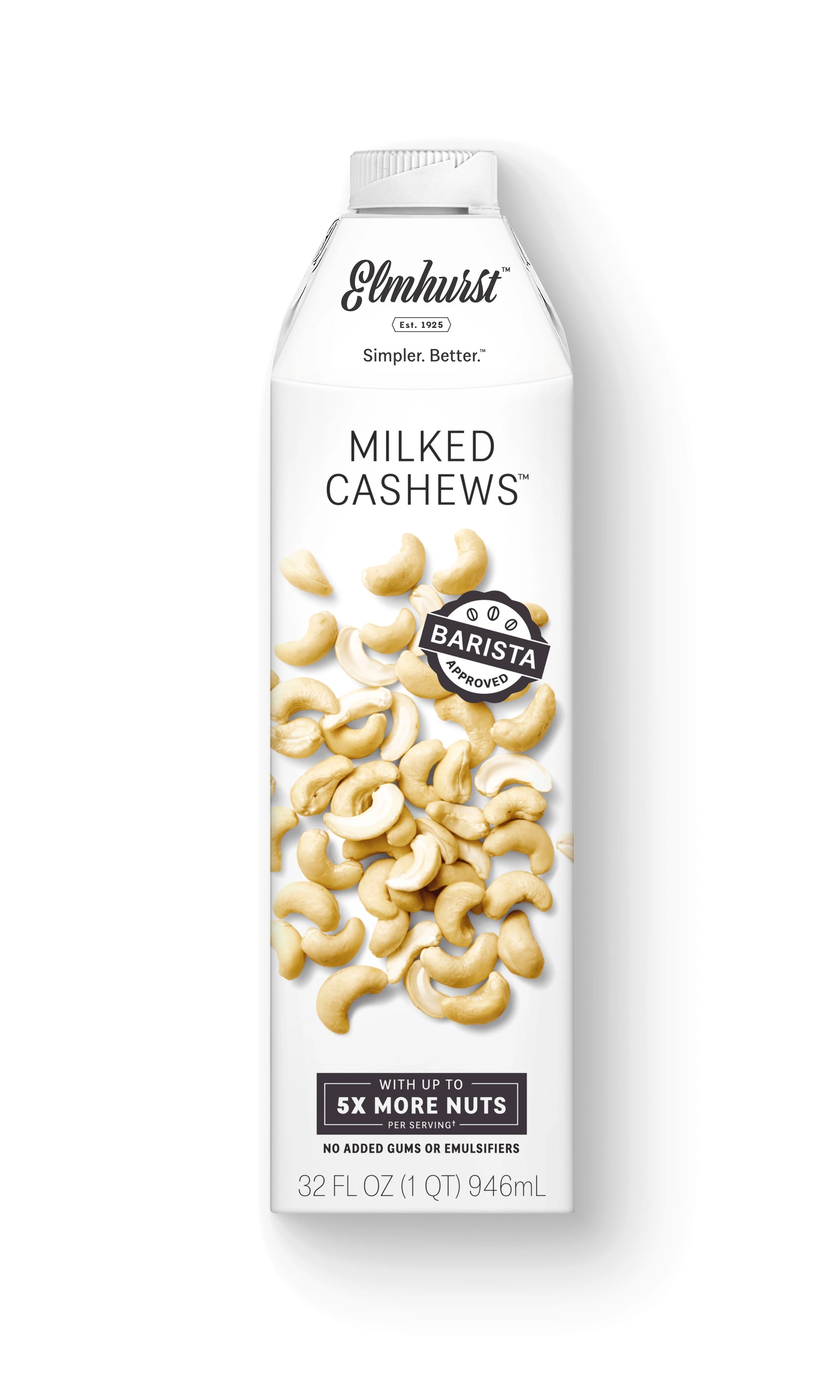
The Milk:
If you’re feeling guilty about being an almond milk drinker but love the flavor, give cashew milk a try! Cashew milk also has a deliciously creamy consistency with a naturally sweet nutty flavor that is still low in sugar. It’s not as delicate as almond milk, but it’s (slightly) better for the environment.
This is the sort of milk that you should definitely learn to make at home, as it’s one of the easier ones to make right. But, unfortunately, while your end product will be delicious, it’ll be pretty free from substantial nutrition. If you’re looking for something vitamin and mineral fortified, you’ll find it in the grocery aisles, but that usually comes with a whole lot of other ingredients and thickeners.
Where it sucks:
While you can use it as a 1:1 substitute for milk in baking, again, we suggest against that. It’s a better choice than almond milk because most cashew milk will come sweetened, but it still leaves your baking recipes missing that extra dose of sweetness that cow’s milk provides.
Where it thrives:
Like almond milk, cashew milk is good for smoothies and milkshakes, but also makes a great milk substitute in savory foods.
Where you wouldn’t expect it:
As a plant-based milk base for a curry.
Coconut Milk

The Milk:
Coconut milk comes in two categories: canned, and what is called “coconut beverage,” which is the refrigerated stuff. The canned stuff is thick and creamy and made from actual coconut and acts as a delicious cooking ingredient and is even thick enough to be whipped into cream. It’s the sort of stuff you should use in a curry.
Coconut milk beverage on the other hand is the sort of thing you’d put into your coffee, drink from a glass, or eat with your cereal. You could bake with both but not in equal measures!
Where it sucks:
In certain recipes. While you can substitute cow’s milk 1:1 with coconut milk beverage, sometimes to great results like when baking, it’s going to sometimes impact the flavor in adverse ways. Coconut milk isn’t quite as neutral as cow’s milk, if you reduce it down into a sauce, that sauce is going to have a coconut quality to it. If that’s not what you’re going for, it can be a bad thing.
Where it thrives:
It’s delicious in baking if you like coconut!
Where you wouldn’t expect it:
It is hands down the best milk to eat cereal with, even compared to cow’s milk. Eat cereal milk with coconut milk and I promise you you’ll never look back.
Hemp Milk
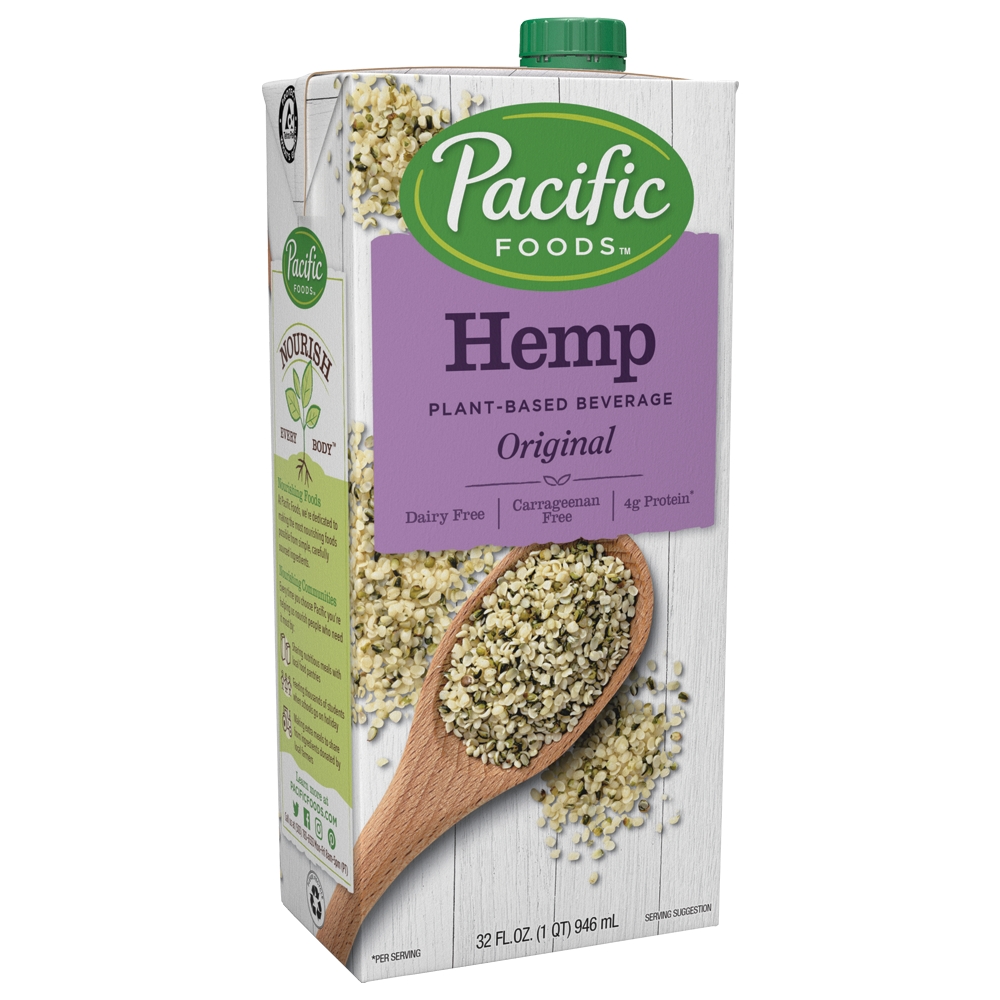
The Milk:
High in protein, hemp milk is a fantastic plant-based milk alternative with a distinct earthy flavor and a thick and creamy consistency. Hemp milk is also high in omega 3s and iron and has skin and heart-healthy nutrients but is low in calcium, according to Heathline. Yes, hemp is a cannabis plant. No, it won’t get you stoned. Even if you drink the whole thing in one sitting.
Where it sucks:
Baking. Again. Like a lot of the other plant-based milk, it’s not that it doesn’t make a good substitute for cow’s milk consistency-wise, it’s just that the flavor is way too distinct, so it messes with the balance of sweetness in your baked goods.
Where it thrives:
Savory dishes, it has an earthiness that adds a lot of distinct character to sauces.
Where you wouldn’t expect it
As the base of a double espresso shot latte with a generous swirl of honey. That’s earthy bitter perfection in a cup.
Flax Milk
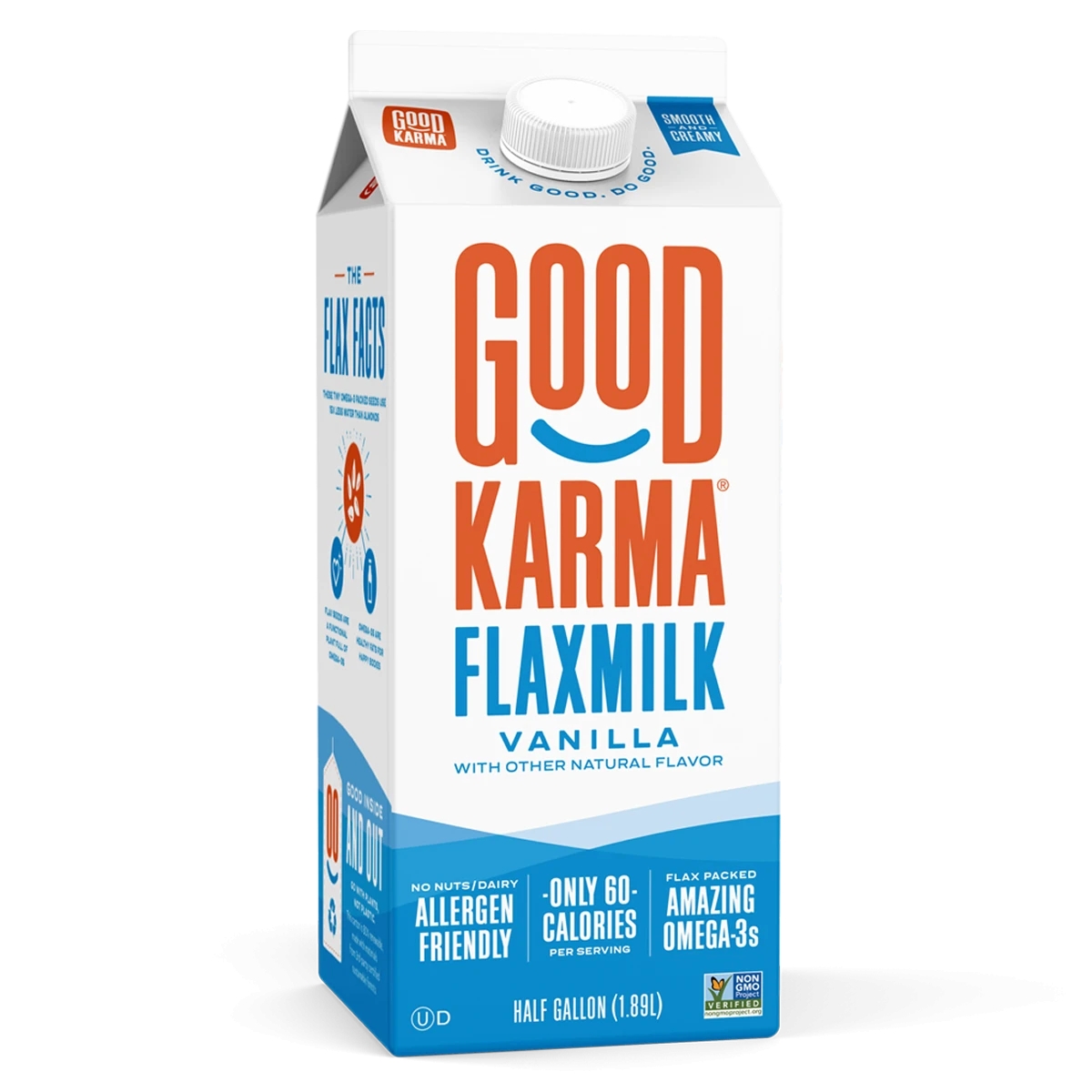
The Milk:
Flax milk — made from flaxseeds crushed and mixed with water — is a great choice for those looking for plant-based milk that doesn’t contain nuts. It has a tasty earthy flavor but is usually pretty low in protein and often comes fortified with all sorts of stuff.
Where it sucks:
Coffee. It doesn’t add a creamy lift like a lot of the other options on this list. Instead, it leaves coffee tasting flat and dirty.
Where it thrives:
In savory dishes.
Where you wouldn’t expect it:
Crepes. It’s a little too thin for good pancakes. But if you’re looking to make a crepe, its silkiness will keep your crepe from ever-rising too thick.
Hazelnut Milk
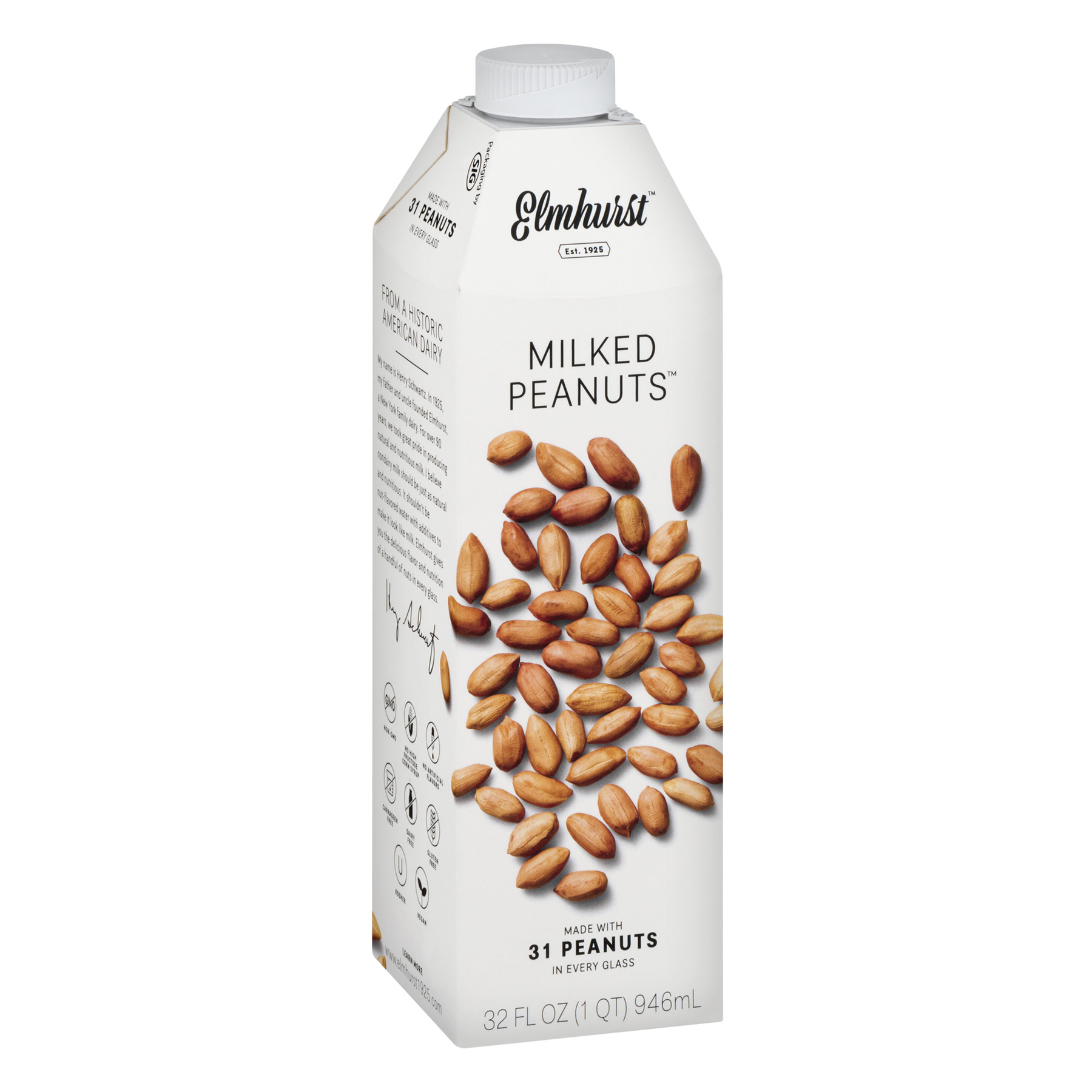
The Milk:
Hazelnut milk is very similar to almond milk in flavor, but the nutritional profiles are slightly different. Hazelnut milk tends to provide about double the calories of almond milk, double the fat, double the protein, and a comparable amount of carbs while producing a smaller carbon footprint.
It’s also a great source of Vitamin B and E.
Where it sucks:
Of all the nut milks, it’s my least favorite for coffee. The nutty notes are just a bit too pronounced and it curdles easily.
Where it thrives:
Smoothies. If almond milk has never really worked for you as part of your smoothie, give the ‘ol hazelnut a try.
Where you wouldn’t expect it:
In cereal. Something about the nutty and earthy flavor just brings simple non-sugary cereals like Cheerios alive. I strongly suggest you pour it into a bowl of the multi-grain variety.
Macadamia Nut Milk
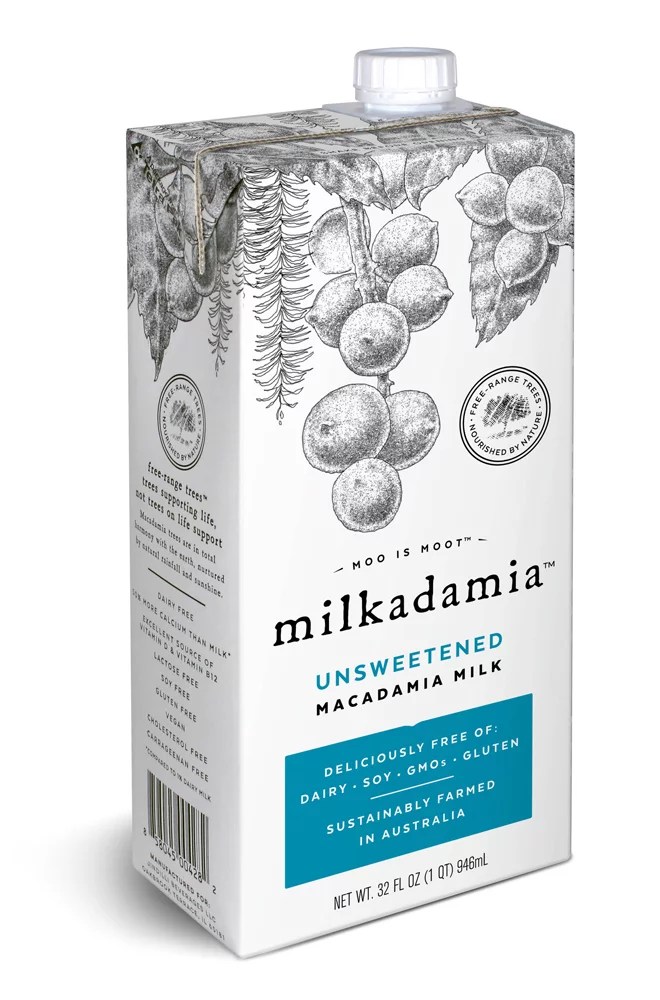
The Milk:
Like all nut-based milks, Macadamia milk is made by blending soaked nuts in water, so it’s another plant-based milk that someone in your friend circle will undoubtedly remind you is “actually just macadamia juice.” Nobody cares Kevin, shut the f*ck up and drink your milk.
What we love about this milk, aside from its sweet creamy almost buttery texture and flavor, is that it’s incredibly easy to make on your own. Just soak a bunch of nuts in water overnight, strain, throw in a blender with water and a pinch of salt and blend to the consistency that you like, and voila! You’ve got your very own milk, or as your local coffee shop likes to say (and charge you extra for) “housemade macadamia milk” without all the packaging waste that buying a supermarket brand would give off.
Macadamia nuts have more fat than other nut-based milk and also provide protein, fiber, manganese, thiamine, copper, magnesium, iron, and vitamin B6. Not bad, but not milk, so if you’re looking for something a bit more fortified you should probably reach for the supermarket brands which typically add in vitamin A, D, calcium, and on some occasions, more protein.
Where it sucks:
Baking. The fat you need is there, but if it’s the unsweetened stuff it won’t be sweet enough and if it’s the sweetened stuff, it’ll end up tasting too noticeably nutty. That’s not an issue if you want that macadamia quality in your recipe, but it won’t taste quite as good as if you just implemented the actual nut into the recipe in the first place.
Where it thrives:
Coffee, it’s just as delicious, creamy, and smooth as almond and cashew milk with a slightly earthier flavor. It also works well in soup recipes that call for milk as part of the stock.
Where you wouldn’t expect it:
As part of a keto diet. It’s packed with more fat than any other nut-based milk.
Oat Milk
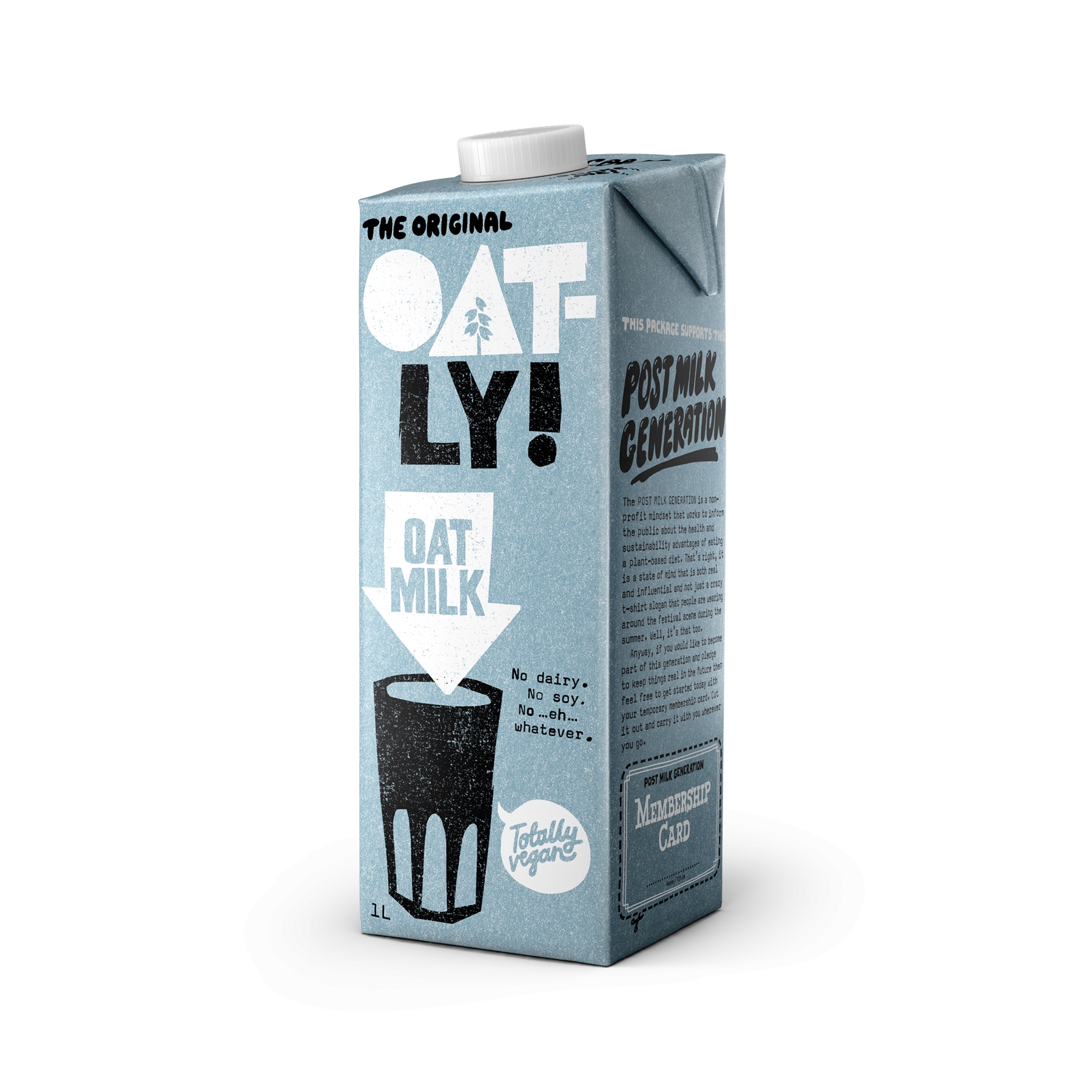
The Milk:
If almond milk is the current favorite of the plant-based milk buying crowd, then oat milk is a close second. Made from whole oats and water, oat milk tastes a lot like a less intense version of oatmeal with a creamy texture and an earthy and nutty flavor.
Where it sucks:
It doesn’t have the neutrality of cow’s milk, so in certain dishes, it imparts an earthy flavor that can be off-putting and give your baked goods a health-store quality. It can be used to an advantage, but not always.
Where it thrives:
In lattes. Like hemp milk, oat milk’s nutty earthy flavor profile pairs perfectly with espresso.
Where you wouldn’t expect it:
In smoothies. Oats sound like a dull way to enhance your smoothie when you compare it to something like banana milk or almond milk, but the earthy nutty flavor of oat milk adds a nice sense of texture that can calm down overly sweetened smoothies. It’s a nice balance.
Pea Milk
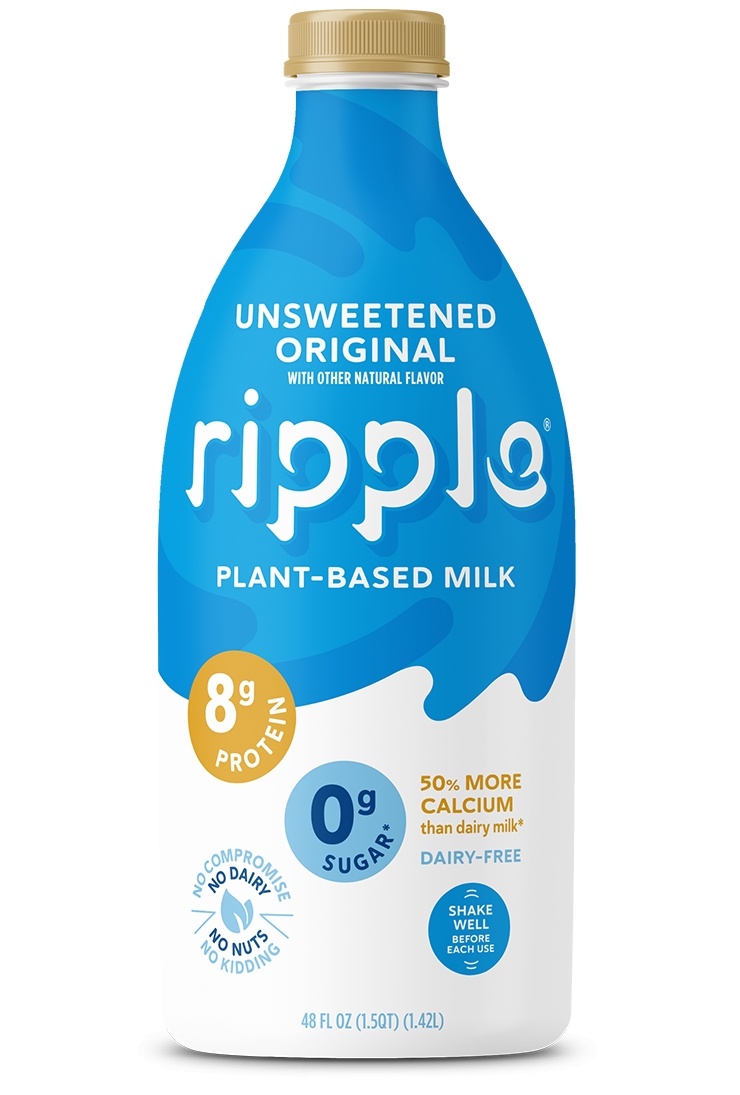
The Milk:
Peas are incredible. The tiny beady vegetables are packed with Omega-3 and Omega 6 fatty acids, as well as vitamins C, E, zinc, a bunch of antioxidants, and most importantly (because we’re talking milk), protein. A half of a cup of peas packs a whopping 4 grams of protein, that doesn’t sound a lot but it’s a half cup of peas we’re talking about. You can literally shoot that back like some cheap whiskey, and we’re not even talking about it in milk form!
Pea milk is made from soaked yellow split peas mixed with oil as an emulsifier and in a lot of cases, vanilla extract. It has a creamy flavor and a smooth texture that is very similar to almond milk, though the aftertaste isn’t quite as pleasing and sweet, and packs just as much protein per cup as actual cow’s milk.
It’s also less environmentally taxing than almond milk production, one pea milk company Ripple claims that it uses 86% less greenhouse gas emissions to make than almond milk. That’s pretty damn significant! It’s also nut, lactose, gluten, and soy-free.
So why hasn’t pea milk taken over and become as popular as almond milk? Well for one, it’s called pea milk. Seriously, as childish as it is to say, it’s just unappetizing. It doesn’t matter how grown up you are. “Would you like a glass of pea milk” is just a sentence nobody wants to hear.
Aside from that, it’s also packed with a lot of things that aren’t peas. Ripple’s unsweetened Pea Milk contains water, a pea protein blend, sunflower oil, vitamin D2 (naturally available in plants but less absorbable than D3), algal oil, tricalcium, and dipotassium phosphate, and some thickening gums. It’s not perfect, but pea milk fans swear by it.
Where it sucks:
In coffee. I don’t like how the strange aftertaste interacts with the bitter and earthy notes of coffee.
Where it thrives:
Baking and in any recipe that calls for milk. It’s creamy enough to hold its own against cow’s milk while also providing enough protein to not totally f*ck up the cake you’re baking
Where you wouldn’t expect it:
Smoothies. It packs the protein you need, the creaminess to nail the proper texture, and it’s one of the most environmentally friendly options on this list, which means it should be the only milk you make your smoothies with, you fake hippie.
Peanut Milk

The Milk:
One of the newer nut-based milks on the scene, peanut milk is naturally high in fat, protein, vitamin E, vitamin B-6, and magnesium and the peanut requires a fraction of the water it takes to produce almonds. It’s also delicious, with a grassy natural flavor and a peanut-y after-taste. We have no doubt it would surpass almond milk in popularity if it didn’t cost so damn much.
It’s on average about twice the price of almond milk. Another big hurdle is that a lot of people are unfortunately allergic to peanuts.
Where it sucks:
Coffee and anything calling for a more neutral flavor. You will taste peanuts with this stuff, it’s unavoidable, even if it’s a sweetened variety.
Where it thrives:
It’s high in fat so it’s a great option for baked recipes.
Where you wouldn’t expect it:
As the base for a curry. It’s high in fat and provides a distinct flavor that you can use to your advantage.
Rice Milk
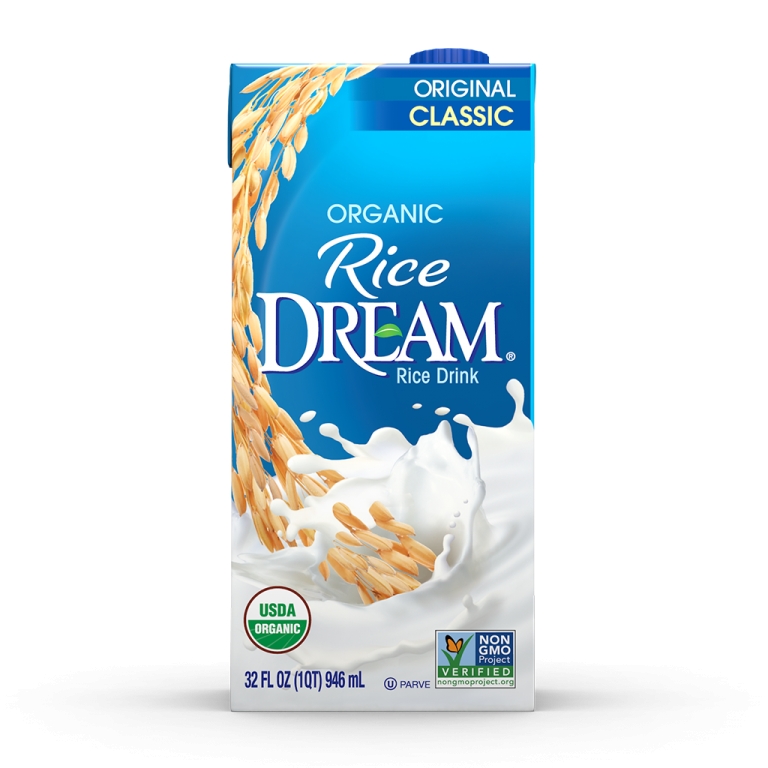
The Milk:
Rice milk is by far the thinnest plant-based milk substitute on the market. It’s also low in fat, protein, and fiber, and is usually sweetened. So why would anyone ever pick rice milk? Because it’s soy-free, dairy-free, and doesn’t contain allergens like nuts. Still, as far as plant-based milk go if you can stomach other options, this is the one we recommend the least.
Where it sucks:
Baking. I know we’ve said that about almost every milk on this list, but rice milk is the absolute worst for baking. The consistency is just way too thin. Do not use this as a 1:1 substitution for cow’s milk, it’ll throw everything off.
Where it thrives:
Cereal, that’s pretty much it.
Where you wouldn’t expect it:
In coffee, it tastes somehow remarkably similar to cow’s milk.
Soy Milk

The Milk:
If you hopped in a time machine and traveled back about 15 years, the only plant-based milk you’d find on grocery store shelves would be soy milk. The option for using soy as plant-based milk was a no-brainer, soy milk contains a lot of protein and is naturally full of antioxidants while still being rich and creamy like cow’s milk. It’s sweet and can be used as a 1:1 substitute for milk on any occasion, from making butter to baking, to really, any type of cooking.
So why isn’t it the most popular? Let’s get to that.
Where it sucks:
Soy milk is interchangeable with cow’s milk, so the flaws with this milk are less in what it can and can’t do, and more about why you might not want to drink soy. A lot of people are allergic to soy, so they can’t drink soy milk. Also, soy farming is incredibly harmful to the environment.
Rain forests are cut down and burnt in order to make way for soybean farms (which also includes animal protein production too). It’s one of the worst environmental offenders, even when compared to almond milk. Soy also contains phytoestrogens that may mess with the hormonal levels of infants, children, and adolescents. According to Livestrong, contrary to popular belief, those phytoestrogens should have little impact on the hormone levels of fully grown men.
Where it thrives:
In cooking. Use it in any recipe that calls for milk and soy milk will get the job done.
Where you wouldn’t expect it:
Of the plant-based milk on this list, soy froths up better than any other milk that isn’t cow’s. Take it from me, I worked as a barista for five years.
Walnut Milk
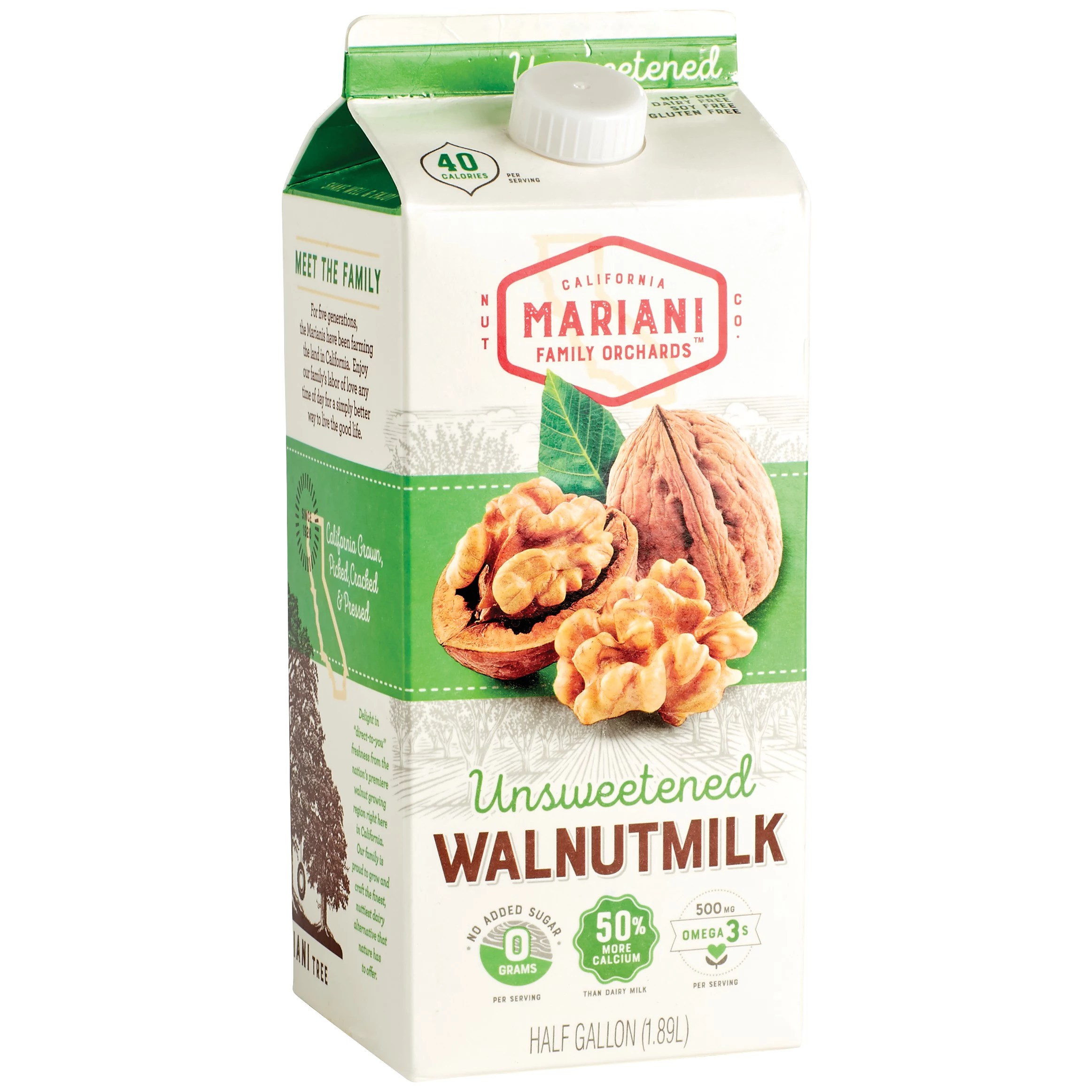
The Milk:
Walnuts are one of the healthiest nuts on the planet, they’re full of protein, magnesium, fiber, and more omega-3 fatty acid than any other tree nut, while also providing less sugar. I’ve had it a ground total of two times in my life because, for whatever reason, it’s one of the rarer nut milks you’ll find on supermarket aisles.
Generally, walnut milk tends to be fortified with calcium, iron, and vitamin D.
Where it sucks:
Like the hazelnut, I don’t like how the walnut’s bitter and chalky flavors pair with the complex flavors of a good coffee roast. I feel like the strong flavor masks and muddies the brew in a way almond milk doesn’t.
Where it thrives:
Tho, especially considering the high omega 3 content.
Where you wouldn’t expect it:
Walnut milk hot chocolate. Give it a try, it’s like drinking a walnut brownie!







